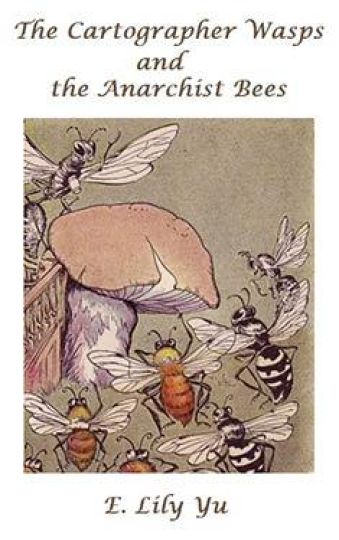I like it, but I can’t pinpoint exactly why. I was invested in what was going to happen with each of the insect cultures, less invested in the humans. It all seemed ‘believable’ in a way. The oppressor wasps and the collaborationist bees and even the anarchist revolutionary bees all acted the way I expected from historical narratives of that sort of thing. Even the failure of the radical experimental state seems depressingly familiar. I’m not sure if I’m missing some deeper point, but it all hangs together.

The Cartographer Wasps and the Anarchist Bees
E. Lily Yu
Once again, time to expose the Young People to a contemporary SF story.
E. Lily Yu won the 2012 Campbell for Best New Writer while still a Princeton undergraduate. The Cartographer Wasps & the Anarchist Bees was nominated for both the Hugo and the World Fantasy Award. It seems like a pretty safe bet. But then, I’ve thought that about previous award winners and was wrong. What did the Young People actually think?
I liked this story.
I really like how the wasp and the bee societies are described. It felt to me like the narration left more distance from the characters than I usually like, but I think it worked well here for showing the way these societies function.
I love the idea of the cartographer wasps. The idea that secretly in their nests they are scholars and they would have continued to do so if they hadn’t been interrupted by humans.
I think I like the way the story is told as much as the story itself. I really liked the writing style and the way it was structured.
However, I feel like I’m missing the point of the story? I’m not entirely sure if there is some kind of commentary or deeper meaning that I’m supposed to be getting out of the story, but it feels like there is and that I’m completely missing it.
—Mikayla
Yu’s story is curious, inventive, and unique. I was halfway through the first section before I realized that the characters actually are bees and wasps. The language drew me into the narrative right away as she describes the origins of the conflict between the insects. I loved how she created details such as the wasps nests that became maps and the impetus for the bees of the Yiwei village to explore and expand. This story succeeds not only due to Yu’s ability to create multiple metaphors but also thanks to her world building skill. Unlike the last story we read, I did not feel lost at all here. In fact, I felt quite the opposite and even wished for more in certain spots. Specifically, I felt the transition into the third section of the story was a bit abrupt. I think this story would also make an excellent book, but it’s also pretty perfect as is. Interestingly, I read the comments to this story, and Yu responded that she wrote this story as hard science fiction, which makes its entomological focus all the more special within the genre.
—Claire
This story seems very apt for today. We keep hearing about the dying and disappearing bees around the world. In this story, wasps are the commodity harvested by humans instead. And like many resources, humans deplete the resource until it is so scarce that they are lucky to find some wasps left to cultivate in order to continue harvest the valuable maps. Similarly, manmade beehives are becoming more popular. There are travelling ones that go along in trucks, plus would-be amateur urban apiarists are encouraged to start their own hives where they live since cities have even more diverse options for nectar and pollen.
The relationship between the bees and wasps mirrors the relationship between the wasps and humans. I read this story as having a moral for the readers: that humans should be mostly like the happy hive of bees with a touch of anarchy and just a trace of wasp-like hubris — that society functions best when we all cooperate and work together to protect against harsh times. In the battle of anarchism vs socialistic monarchy vs oligarchy, socialism seems to win.
I enjoyed the detail that wasp and bee dialects are written in pheromones. But then that makes the conversations between the bee ambassador and the foundress odd – how are they communicating? Is the bee ambassador a specialist in wasp communication? Can the foundress speak in bee dancing language? (Unlikely – the foundress seems much too regal to be dancing around while drinking nectar from a paper horn.)
Overall, I give the story a tentative thumbs-up. Worth reading once, but it’s almost too anthropomorphic for my taste.
